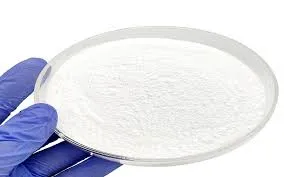Chemical Treatment for Water Purification
Water, an essential resource for life, is often compromised by pollutants, pathogens, and various contaminants. As populations grow and industrial activities expand, the quality of water sources diminishes, necessitating effective purification methods. Among the various approaches to water purification, chemical treatment stands out for its efficiency and versatility. This article explores the principles, methods, advantages, and challenges of employing chemical treatment in the purification of water.
At its core, chemical treatment involves adding specific chemicals to water to remove pollutants and pathogens, achieving a level of purity suitable for human consumption and environmental safety. The processes primarily hinge on coagulation, flocculation, disinfection, and advanced oxidation.
Chemical Treatment for Water Purification
Disinfection is another vital aspect of water purification using chemicals. The presence of harmful microorganisms poses a significant risk to public health. Chemicals like chlorine, ozone, and chloramines are commonly employed to kill bacteria, viruses, and other pathogens. Each disinfectant has its strengths; for example, chlorine is extensively used due to its effectiveness and residual properties, which help maintain water quality as it travels through the distribution system. However, concerns over the formation of harmful disinfection byproducts emphasize the need for careful dosage and monitoring.
chemical treatment for water purification

In addition to traditional methods, advanced oxidation processes (AOPs) employ powerful oxidants, such as hydrogen peroxide or ultraviolet (UV) light combined with ozone or titanium dioxide, to degrade organic and inorganic contaminants in water. AOPs are particularly effective at breaking down persistent pollutants, such as pharmaceuticals and industrial chemicals, which may not be adequately removed by conventional methods. These processes represent a promising frontier in chemical water treatment, allowing for the treatment of complex and severely contaminated waters.
The advantages of chemical treatment in water purification are manifold. It is a highly effective method that can significantly reduce pathogens and contaminants, thus ensuring potable water quality. Moreover, the processes can be tailored to meet specific water quality standards, providing versatility to address diverse contamination issues. Additionally, chemical treatment systems can be integrated into existing infrastructure, making them a feasible option for many communities.
However, the reliance on chemical treatment is not without its challenges. The introduction of chemicals into the environment raises concerns about the production of byproducts, which may themselves be harmful. Furthermore, the potential for chemical handling hazards and the need for proper training for personnel handling these substances cannot be overlooked. The cost of chemicals and ongoing monitoring can also strain budgets, particularly for developing regions.
In conclusion, chemical treatment plays a crucial role in modern water purification strategies. It effectively reduces contaminants and ensures the safety of drinking water while being adaptable to various circumstances. Despite its challenges, the continued evolution of chemical treatment techniques, particularly with the advent of advanced oxidation processes, provides a promising avenue for tackling water purity issues. Moving forward, a balanced approach that incorporates technological advancements, rigorous monitoring, and public education can ensure that chemical treatment remains an effective and sustainable solution for water purification in an increasingly water-scarce world.

